-
 10 Exquisite Pongal Rangoli Designs to Celebrate the Harvest Festival With and Why You Should Practice This Ancient Art (2020)
10 Exquisite Pongal Rangoli Designs to Celebrate the Harvest Festival With and Why You Should Practice This Ancient Art (2020)
-
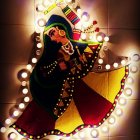 10 Divine Rangoli Designs for Navratri: Beautiful Rangolis To Welcome the Goddess and Also Good Luck to your Home! (Updated 2020)
10 Divine Rangoli Designs for Navratri: Beautiful Rangolis To Welcome the Goddess and Also Good Luck to your Home! (Updated 2020)
-
 Want Everything Perfect and Spectacular on Wedding Day? Great Home Decor Ideas and DIY Tips for a Lavish Wedding to Leave a Lasting Impression on Your Guests (2020)
Want Everything Perfect and Spectacular on Wedding Day? Great Home Decor Ideas and DIY Tips for a Lavish Wedding to Leave a Lasting Impression on Your Guests (2020)
Significance of Rangoli in Indian Culture
We often come across a beautiful Rangoli or a Kolam design drawn outside home entrances. Rangolis are also drawn during Diwali, Navratri and other auspicious occasions. Drawing a Rangoli in your pooja room or outside the home entrance holds a significant place in Hindu culture. A beautifully drawn Rangoli evokes spiritual energies in the aura around and brings about divine energy and serenity.
Rangoli designs are believed to have a spiritual perspective and a lot of benefits. It is believed that with the change of designs, patterns and colours, the vibrations emanating from a Rangoli also change. Many particular and specific Rangoli patterns attract and transmit energies from the deities.
In the olden times, women used to wake up in the wee hours of the morning to clean the home entrances and create a splendid artwork of colour and design. The creation was different every day and the patterns would not only reflect their inherent talent but also their heart and soul.
Myths Associated with Rangoli
There are many popular myths associated with Rangoli. One legend goes that in a famous kingdom, both the king and the royal priest were very popular amongst the people. One day, the priest’s son died suddenly. The entire kingdom was devastated and began praying to Lord Brahma to bring him back to life. Lord Brahma was taken aback by the sincerity of their prayers and told the king to paint the image of the dead son on the floor. He then brought life to the image and the son was alive again. Since then, it became a tradition to paint Rangolis on the floors of all the houses. Rangoli patterns are thus considered as a magical invitation with the blessings of Lord Brahma
Another legendary myth dates back to the 8th century. It revolves around Goddess Andal of Tamil Nadu. According to this story, there lived a great devotee of Lord Vishnu who wanted to marry him. She expressed her desire to marry him at the age of 15. She used to pray to the Lord during the Brahma Muhurta, i.e. one and a half hours before sunrise. Her desire was fulfilled and she got married to the Lord. So, in South India, to marry the boy of their dreams, girls get up early before sunrise and paint Rangolis on the entrance of their homes to get the husband of their dreams.
Origin
The exact year or time of origin of Rangoli is unknown. But the trend is not only limited to Indian culture. Rangoli designs have even been traced back to African tribes in the Amazon jungle too. They too practised drawing Rangoli patterns after praying. They performed the prayers for half a day and then drew their Rangoli patterns with great interest. Later, the entire tribe used to sit around the design. In their culture, they believed that the Rangoli patterns attract animals, and then the tribe kills them.
In our culture, women used to chant sacred hymns and sing bhajans while drawing their Rangoli designs. When making Rangoli for Diwali or other auspicious occasions, they believed in creating their designs with a spiritual angle to create energy centres, which had a positive impact on the viewer. When made in front of the home entrances, the Rangoli patterns would have a calming effect on the person about to enter the house. Specific patterns of Rangoli designs created pools of energy to motivate and channelize energy in the people. For subtle energy vibes, rounded design is made and for sharp energy levels, Rangoli patterns with sharp sides were created. During ancient times, only natural materials like sindoor (vermilion) and haldi (turmeric) were used to create the designs.
Materials Used
The art of Rangoli making has evolved over the years. In ancient times, Rangolis were drawn keeping in mind the science of creating energy. The design, symbols, lines and colours, all had a significant role to play. Moreover, only nature-friendly materials like kumkum and haldi were used. Today, however, the trend has changed completely. Rangoli is made with coloured sand mostly. People also make Rangolis with flower petals, grains and rice and red brick powder. After the design is made, people further decorate their designs with lit diyas.
Today, ready-made stencils are also used for making Rangoli patterns. Even decorative Rangoli patterns are available online, which have to be simply placed on the floor as a decoration. If you do not have the time to make the Rangoli from scratch, you can just place these patterns on the floor near your door entrance or in your pooja room. If you want to buy ready-made Rangoli patterns, you can buy them from Amazon. We have selected this one for you. Priced at Rs.309 only, this ready-made Rangoli pattern is made from acrylic and can be placed on tabletops, floor or even stuck on the walls.
Rangoli Trends in Different States of India
Gracing home entrances, Rangoli patterns are believed to be harbingers of good luck and prosperity. Each state in India has its own way of addressing the Rangoli. In West Bengal, it is called ‘Alpana’ and in Odisha, it is called ‘Murja’. In Kerala and Tamil Nadu, it is called ‘Kolam", while in Chhattisgarh, it is called ‘Chowkpurana’. It is known as ‘Mandana’ in Rajasthan.
Whatever the given moniker, the essence of Rangoli remains the same. It is quintessentially drawn before any auspicious practice, or to mark the beginning of something new. The magnificent creations are made to invite peace, prosperity and happiness into the lives of the people.
Learn How to Make Rangoli Designs Using Dots for Diwali in 2020
If you are a beginner, but the science behind creating Rangolis has intrigued you, then we have got some easy dotted techniques that can help you make beautiful Rangoli patterns quite easily. Have a look at some simple patterns explained below with videos?
Idea #1 - Easy Rangoli Pattern with Dots
This easy Rangoli pattern can be made in a jiffy.
Materials:
- Round lid
- Sand colours
- Earbud
Instructions:
- You can start using any round lid or plate you have at home. Just use the round lid like a stencil and draw an outline with purple coloured sand. Now, remove the lid and fill in the round with the sand.
- Next, make dots on the outline of the circle with white sand and then press each round mound of sand with a finger to flatten it.
- Make another line of red dots outside the white dotted line. Repeat the dotted line with green sand and then orange sand.
- Finally, make another last dotted line with the same purple sand shade as used in the centre. Instead of flattening this one with your finger tip, use a comb to make a striped pattern.
- Lastly, using an earbud, make leaf pattern inside the central purple circle. Your Rangoli pattern is now complete.
Idea #2 - Deepam Rangoli Design Using Dots
This one is a simple Rangoli pattern made with 11 X 1 dots pattern. First, follow the dots pattern as shown in the video. Now, connecting the dots, make the diyas as shown, starting from below. You will be able to make 9 diyas totally. Next, connect the diyas with the design as shown. Make four small flowers with the four dots left. Your Rangoli pattern is now complete. This design requires only chalk or a pencil and you can draw your complete design. You can later colour the diyas with different colours of Rangoli sand powder.
Idea #3 - Simple Dotted Rangoli Pattern
This one is another clever Rangoli design made with simple tools available at home.
Materials:
- Small round plate
- Tea strainer
- Rangoli sand colours
- Rice Colander
Instructions:
- Using a black sketch-pen, mark the outline of the round plate on the floor.
- Fill in the circle with blue coloured sand using a strainer.
- Now placing a rice colander on the blue circle, pour in pink sand using the strainer again. You will find beautiful pink dots on the blue circle.
- Using a rounded cap, make holes in the blue circle on four corners as shown in the video.
- Pour orange sand in the big dots in the four holes. Using your finger, make holes in the orange dots, to give them the appearance of a ring.
- Next, using an earbud, make pattern in the rings as shown and then fill in the centre with white sand.
- Next, taking a medium sized rounded lid, make circles outside this pattern and fill them with sand of different colours.
- Lastly, using white sand again, make dots outside these circles as shown in the video. Your Rangoli pattern is now complete.
Idea #4 - Traditional Indian Designs
This one is a traditional design made with 7 x 1 dots. Notice how the lady is first making the dots with white Kolam powder. She then connects the dots below to make a Veena. This pattern does require some practice and free-hand drawing skills. After the Veena pattern is complete, Goddess Saraswati's face is made at the top. Also notice, how the lady creates a shading effect with the same Kolam powder by using little sand. If you are yet to gain expertise at the trick of throwing sand with your fingers, then you can make the same image with chalk and then using coloured sands, you can fill in the Rangoli pattern with different colours.
Idea #5 - Rangoli Kolam Designs
This one is an easy pattern made by joining 9 x 3 dots. After making the dots, seven stars are made with white Kolam powder. These stars are then converted into flowers as shown in the video. Once all the flowers are made, your design is complete. You can choose to further decorate the pattern with coloured sand or use coloured rice or flower petals too. This one is a simple yet very eye-catching design of Kolam made outside homes in South India. On a daily basis, women-only use white powder to make the designs. On special occasions, they use coloured powders.
Idea #6 - Peacock Rangoli Design
This one is a pretty peacock Rangoli pattern made by joining 7 x 4 dots. Three peacocks are made in a circular pattern joining the dots. They are then coloured blue and shaded with green sand. Lastly, a yellow colour is used to shade the feathers and the beak.
Idea #7 - Rangoli with Flower Petals
Collect different varieties of flower petals. Start by making four circles one inside the other using chalk. Now put different coloured petals in all the circles. Create smaller circles, in the end, using a different coloured flower petal as shown in the video. Lastly, use lit diyas to decorate your Rangoli. Keep one in the centre and you can also keep more diyas in a pattern on the outer and inner circles.
Bonus: A Cool App for Dotted Rangoli Patterns
A cool app has been launched on Android and iOS platforms for those who want help in making Rangoli patterns. This app – ‘Simple & Easy Rangoli Designs with Dots for Diwali’ has a video collection of how to make dots Rangoli of different sizes and shapes. These videos are available in a variety of languages. So download it now and browse through the different patterns. Follow the dots and the instructions to create your own stunning Diwali Rangoli with dots.
-
 This Diwali, Prepare to Welcome Goddess Lakshmi with a Mix of Traditional and Contemporary Décor: Unique Diwali Decoration Ideas for Your Home to Make It Look Spectacular Like Never Before! (2020)
This Diwali, Prepare to Welcome Goddess Lakshmi with a Mix of Traditional and Contemporary Décor: Unique Diwali Decoration Ideas for Your Home to Make It Look Spectacular Like Never Before! (2020)
-
 10 Divine Rangoli Designs for Navratri: Beautiful Rangolis To Welcome the Goddess and Also Good Luck to your Home! (Updated 2020)
10 Divine Rangoli Designs for Navratri: Beautiful Rangolis To Welcome the Goddess and Also Good Luck to your Home! (Updated 2020)
-
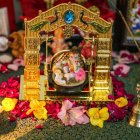 जन्माष्टमी उत्सव पर अपने घर में आने वाले महमानों को घर की सजावट और सुंदरता से प्रभावित करें : यहां 10 जन्माष्टमी सजावट के सुझाव जिन्हे आसानी से लागु किया जा सकता है। (2020)
जन्माष्टमी उत्सव पर अपने घर में आने वाले महमानों को घर की सजावट और सुंदरता से प्रभावित करें : यहां 10 जन्माष्टमी सजावट के सुझाव जिन्हे आसानी से लागु किया जा सकता है। (2020)
-
 Its Birthday Time for Our Favorite Lord Krishna and Time to Go the Creative Way this Year with These Unique Janamashtami Decoration Ideas 2020
Its Birthday Time for Our Favorite Lord Krishna and Time to Go the Creative Way this Year with These Unique Janamashtami Decoration Ideas 2020
-
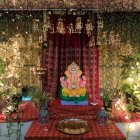 Decorate Your Home Spectacularly This Ganesh Chathurthi! 10 Artistic and Stunning Ganesh Chathurthi Decoration Ideas for a Fresh Look!
Decorate Your Home Spectacularly This Ganesh Chathurthi! 10 Artistic and Stunning Ganesh Chathurthi Decoration Ideas for a Fresh Look!
Decorate Your Home with Beautiful Rangoli Designs Using Dots
Rangoli is an art form that has its roots in our ancient history and culture, but it emerges as a widely practised art even today. It is a crucial part of major festivities across India. Being integral to our traditional and religious activities, this one resonates with our love for art since times immemorial. We hope our guide for making beautiful Rangolis with dots will provide many inspirational ideas to you for this festive season.

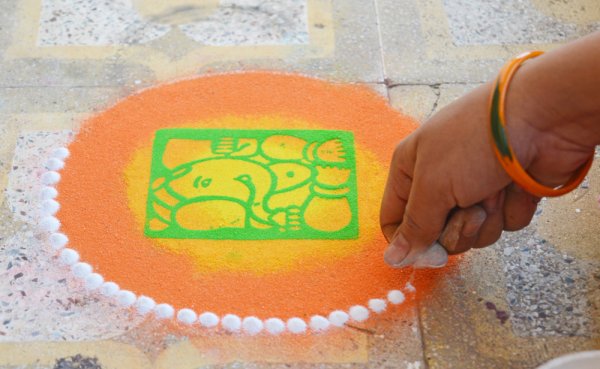


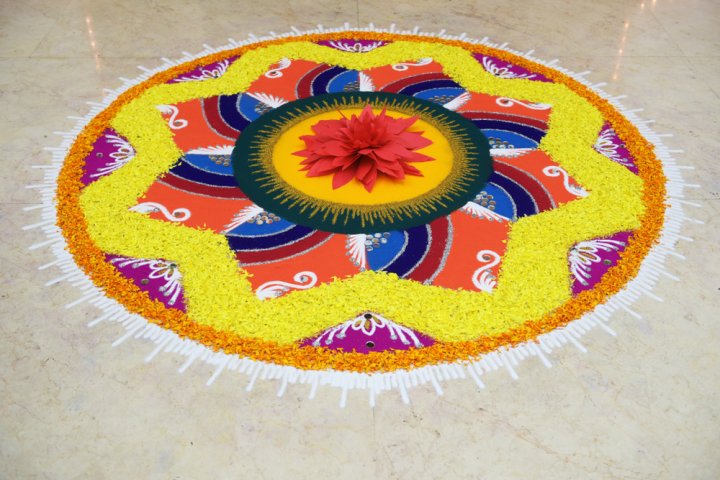
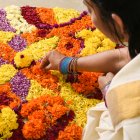
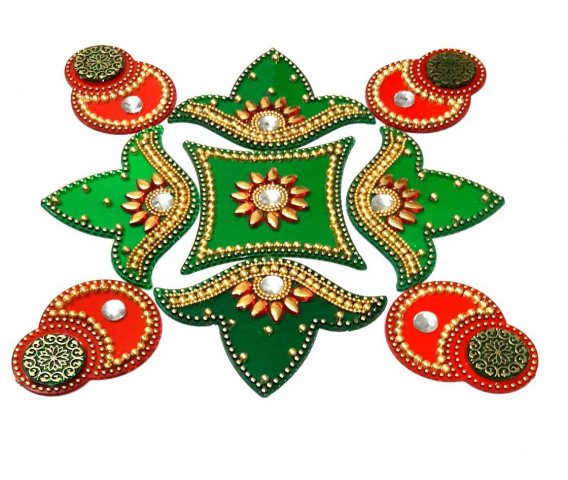
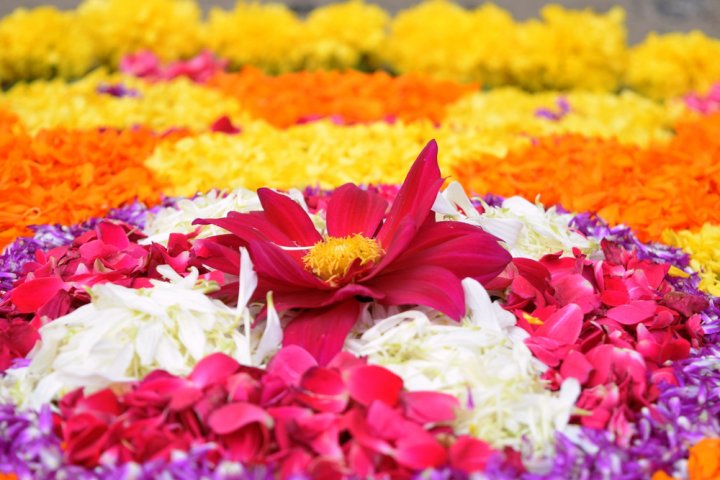
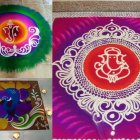


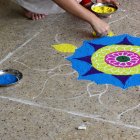
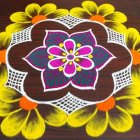

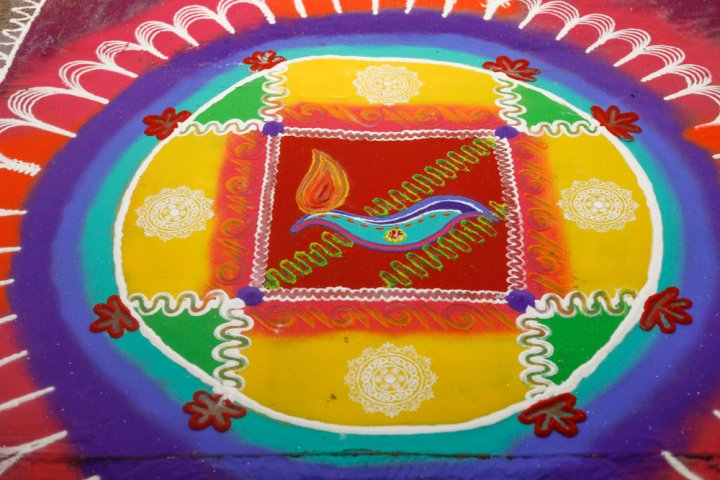
 Highlight the Best Facets of Your Incomparable Beauty: Discover the Best Face Highlighter Currently Available in India and Everything You Need to Know About Using Face Highlighters for Maximum Effect (2023)
Highlight the Best Facets of Your Incomparable Beauty: Discover the Best Face Highlighter Currently Available in India and Everything You Need to Know About Using Face Highlighters for Maximum Effect (2023)
 Forget the Blemishes and Get that Picture Perfect Flawless Radiance on Your Face: Check out the Best Foundations for Oily Skin Currently Available in India and Everything You Need to Know About Makeup Foundations (2023)
Forget the Blemishes and Get that Picture Perfect Flawless Radiance on Your Face: Check out the Best Foundations for Oily Skin Currently Available in India and Everything You Need to Know About Makeup Foundations (2023)
 Make Your Presence Felt Wherever You Go: Discover the Best Perfumes Under 2000 for Both Men and Women to Announce Your Arrival and Make Any Occasion Memorable (2023)
Make Your Presence Felt Wherever You Go: Discover the Best Perfumes Under 2000 for Both Men and Women to Announce Your Arrival and Make Any Occasion Memorable (2023)
 Protect Your Oily Skin from the Harmful Rays of the Sun: Discover the Best Gel Based Sunscreens for Oily Skin and Everything You Need to Know Before Buying One (2023)
Protect Your Oily Skin from the Harmful Rays of the Sun: Discover the Best Gel Based Sunscreens for Oily Skin and Everything You Need to Know Before Buying One (2023)
 Minor Blemishes and Wrinkles Affecting Your Confidence? Check out the Best BB Creams to Conceal Your Worries and Nourish Your Skin to Restore the Healthy, Radiant and Glowing Complexion Back Again (2023)
Minor Blemishes and Wrinkles Affecting Your Confidence? Check out the Best BB Creams to Conceal Your Worries and Nourish Your Skin to Restore the Healthy, Radiant and Glowing Complexion Back Again (2023)
